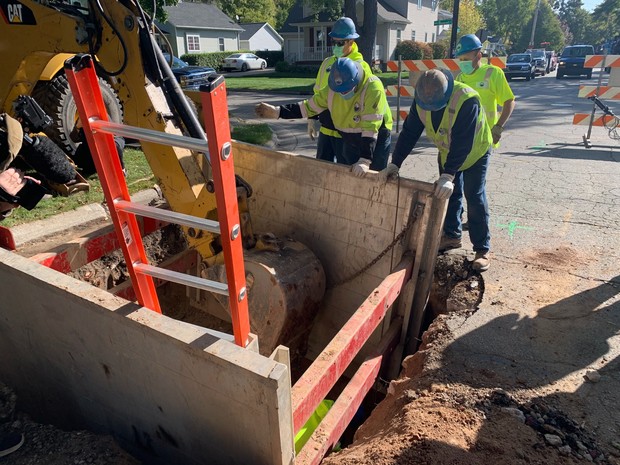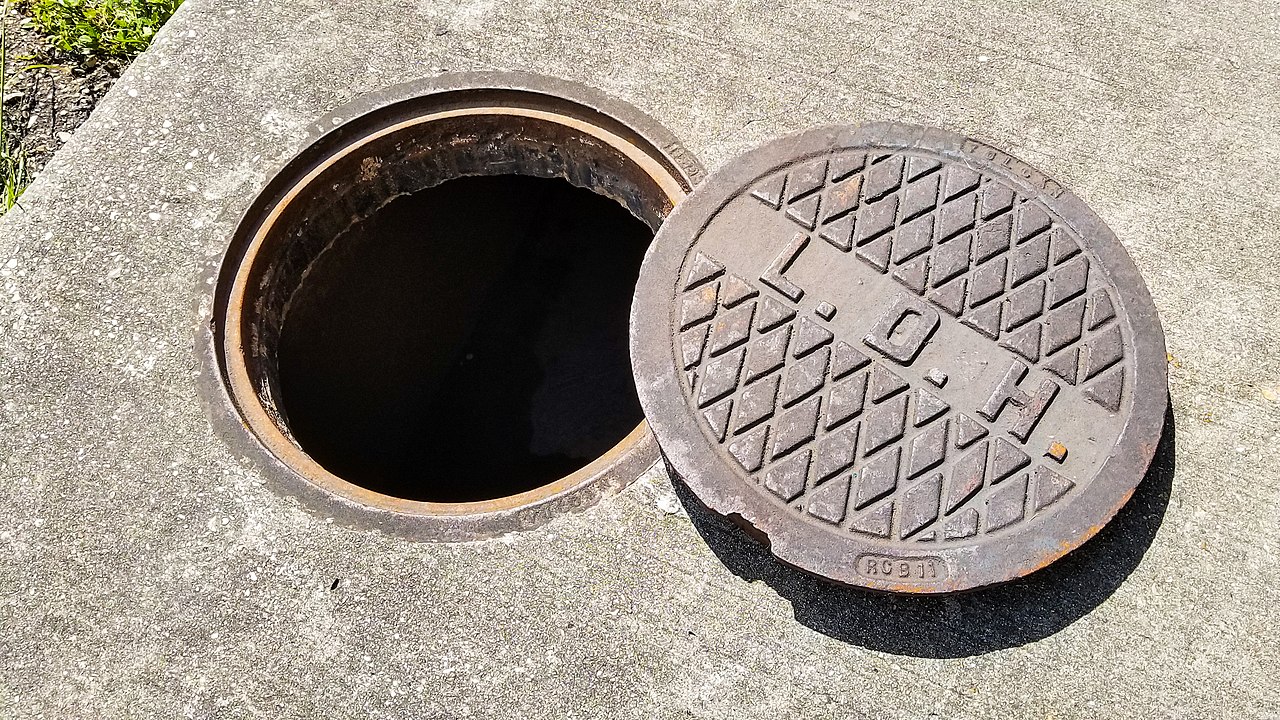Notes on the 2021 Bipartisan Infrastructure Law, Part III
Late last year Congress passed the Infrastructure Investment and Jobs Act (IIJA), also known as the Bipartisan Infrastructure Law, authorizing $63.3 billion for the water sector. My last two posts discussed the political meaning of those billions and examined some of the water-related policy directives embedded in the new law. “This is the United States of America, for God’s sake,” a triumphant President Biden declared last month. “Everyone in this country should be able to turn on the faucet and drink clean water.”
To that end, the federal government just made its biggest water investment in 50 years and scattered a handful of policy seeds across federal agencies. Officials across the country are now scrambling to put all the dollars to work. But beyond the hoopla, what does the IIJA mean for the nation’s water and sewer systems?
This third and final post in the series considers the IIJA’s water-related provisions in a wider context, ponders the limits of its largess, and identifies elements of implementation that are the keys to its ultimate success.
New wine, old wineskins
The IIJA’s water-related funding is significant, but far short of what’s required. The $15 billion that the IIJA allots to lead service line replacement is perhaps a quarter of what’s needed nationwide. The $40 billion for general water and sewer infrastructure represents perhaps 10% of the total investment requirement for drinking water alone. That shortfall reflects political reality and is not necessarily a problem.* Properly targeted, these funds can help address the nation’s most severe and immediate infrastructure problems while badly needed reforms develop.

The money is coming! The money is coming!
Thing is, the IIJA doesn’t tie federal funding to systemic solutions—it’s mostly cash injected into existing institutions. Most obviously, the IIJA does nothing to address the fragmentation that bedevils the water sector. The law targets much of its funding at small systems but does not tie funding to consolidation or regionalization.
- The IIJA authorizes $25 million for workforce development, but small systems will continue to struggle to attract and retain qualified operators.
- The IIJA funds technological development, but without consolidation, small systems will lack the organizational capacity to deploy technology.
- The IIJA defines “resilience and sustainability” comprehensively for medium and large systems (water conservation, efficiency, watershed prevention, cybersecurity, energy efficiency, etc.). But for small systems, “operational sustainability” means only water loss prevention.
The IIJA’s does not address the basic financial or organizational constraints at the heart of the water sector’s woes. Water utilities need sufficient ongoing operating revenue and human capital to succeed. Without systemic changes, the only way for small or shrinking systems to survive is periodic injections of federal cash--hardly a recipe for sustainability.
Funding structures are also basically unchanged, as IIJA funding will flow mainly through existing Drinking Water State Revolving Funds (DWSRFs). As we’ll see in a moment, that’s important.
Toward justice...
In the long run, maybe the most important aspect of the IIJA is its attention to disadvantaged communities. The IIJA sets EPA on a path toward water and sewer funding as a matter of environmental justice. As I observed last time, Congress didn’t define “disadvantaged” or “community,” and so we’ll have to wait and see how EPA and state administrators interpret those directives. But in prioritizing disadvantaged communities for funding the IIJA sets an important precedent: water is an environmental justice issue—that much is now established for the foreseeable future.
Unfortunately, the IIJA made no commitments to closing socioeconomic, racial, or ethnic gaps in environmental enforcement.** The IIJA’s commitment to justice extends to EPA’s funding carrots, but not its regulatory sticks.
...and moral hazard?
A little spoken but widely whispered concern is that the IIJA may inadvertently lead to less investment in water/sewer infrastructure in the long run. The prospect of federal funding risks turning responsible stewardship of a community’s water infrastructure into a sucker’s bet.

Sure, removing all of its lead service lines was the right thing for Green Bay to do, but was it the savvy thing?
Consider the lead service line saga. A couple weeks ago, Vice President Harris touted the IIJA funds that will help Milwaukee Water Works’ ongoing efforts to remove the nearly 70,000 lead service lines in Brew City. But two hours’ drive north, Green Bay Water Utility used rate and tax revenue to fund removal of that city’s 2,000 lead service lines in 2020.
Even more remarkable is Newark: New Jersey’s largest city has already replaced more than 22,000 lead service lines over two years with a $120 million local funding package. Green Bay and Newark are great success stories—but their ratepayers and taxpayers will pick up the tab. Meanwhile, officials elsewhere who dragged their feet and wrung their hands over the costs of lead service line removal will now have access to Uncle Sam’s wallet. That sends a troubling signal and seems to imply a perverse logic of failure.
There are no regulatory reforms built into IIJA, and so observing the federal government come to the rescue, some utilities may intentionally put off needed improvements and replacements in hopes that a really bad system may lure federal funds and so reduce the need for rate increases. The chance to land a grant could even disincentivize a small/disadvantaged system from consolidating with a larger, more financially stable system. Economists call this sort of danger a moral hazard: a lack of incentive to guard against risk where one is protected from its consequences.
Redemption from below
On its own, the IIJA is a milepost, not a destination for the water sector—more salve than salvation. There seems little chance that Congress will pass the kind of thorough, systemic reforms that the water sector needs.
That’s a reason for determination, not despair. The transformation that the water sector needs will come bottom-up, not top-down. A little over a century ago, drinking water pioneers introduced chlorine disinfection to municipal water supplies.

These leaders championed the new technology, won political support for investments in water treatment, and in so doing saved countless millions of lives across the country – all without a federal mandate and decades before the EPA was created. That transformation emerged not from federal directives but from a cadre of public health and engineering professionals who took political risks for the chance to build a healthier, more prosperous world.
A similar vanguard is forming today. Systemic solutions for America’s water systems will not emerge from Capitol Hill but from statehouses, city halls, commission hearings, boardrooms, and zoom meetings. Momentum for consolidation is growing, with serious efforts underway in Kentucky, California, and elsewhere. States are leading the way in regulating emerging contaminants like PFAS in Michigan, Wisconsin, and beyond. New laws and public advocacy are bringing unprecedented visibility to water utility performance in New Jersey. Maybe most exciting of all, Washington State’s new 2021 HEAL Act will weave environmental justice into the implementation of the Evergreen State’s water programs—including, presumably its DWSRF. The roots of that reform will grow from deep in the details of state-local funding agreements.
Ultimately, state DWSRF administrators will decide whether the IIJA’s billions are levers or life support. State agencies can use the forthcoming federal funds to push water utilities toward equity and excellence, or to patch up failing systems and prop up failing institutions. On its own the IIJA won’t get us where we need to be, but wielded correctly, its funding can help us toward systemic solutions. DWSRFs can avoid moral hazard, foster consolidation, compel regulatory compliance, and advance environmental justice. Whether they do will depend on local, state, and professional leadership.
The revolution will not be legislated.†
*How much ongoing water/sewer utility funding Uncle Sam ought to provide is a topic for another day.
**See, for example, this study, this study, and this study.
†The revolution will be live.

